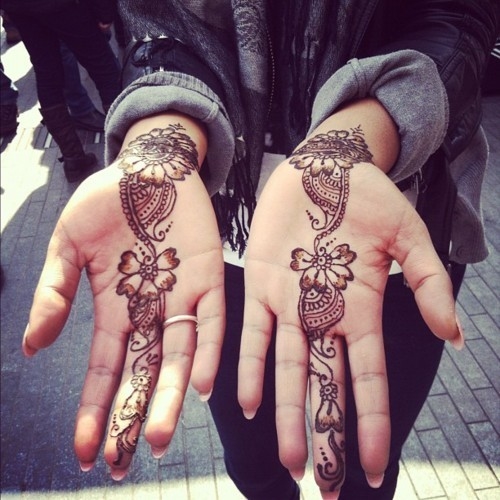
Henna is a natural reddish color dye applied in the form of paste that is extracted from the plant with the same name. It is used to dye your hair, paint your nails and color your skin using the mehndi technique or temporary "tattoos" (it is not properly a tattoo since it is applied to the skin).
It began as a necessity due to its healing properties, but today it is a Moroccan tradition, and an essential part of the beauty tricks of the women of this country. The flowers, leaves and fruits of the plant contain active ingredients with medicinal qualities that serve to regulate menstruation, such as astringent, digestive, antiseptic, antimicrobial, fungicidal, analgesic and anti-inflammatory. Initially it was used as a complete dye, since the application on the skin causes the body temperature to drop, which was very useful in the hottest months of Morocco. There is evidence that henna tattoos originated in the Middle East, probably in Egypt and primarily for medicinal purposes. The henna was also part of a funeral ritual to prepare the body on its journey to eternity, since its application facilitated the journey. Today Moroccan women use it to dye their hair, as a tanning dye on the skin or to make the well-known drawings on hands and feet. The technique has been evolving and including symbols that protect from the evil eye, witchcraft or to increase fertility.
These tattoos are used in special events, such as weddings, pregnant women or when a family member returns from Mecca. The symbols that are drawn have a meaning. These motifs appear in all aspects of the Berber craft tradition, such as ceramics, leather and textiles, not to mention all kinds of personal ornaments. Berber designs include magic numbers, magic squares, Quran verses, Arabic writing, geometric shapes (triangles, squares, crosses, eight-pointed stars, six-pointed stars, spirals, circles and rhombuses), as well as patterns representing plants , flowers, human beings, and body parts such as eyes and hands. Odd numbers are also important for Berber designs and are often incorporated into tattoos.
A correct application is important so that the dye is well fixed to the skin and you have to be patient as it is a laborious process and drying is several hours. Caution should be taken with the black dyes that seem to attract the tourist more, since as we have mentioned, the henna is a reddish-brown color and these black tattoos are usually composed of toxic components that can pass into the bloodstream.